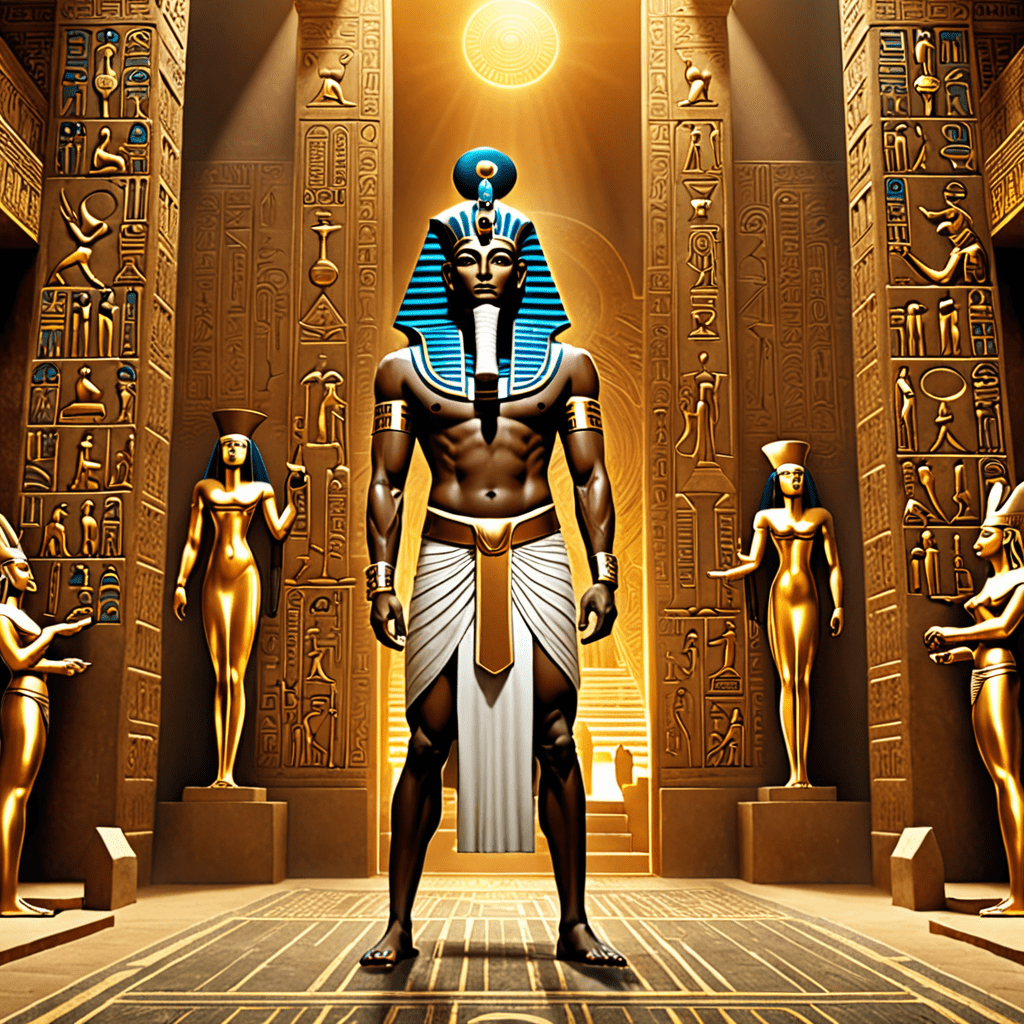Finnish Mythology: Tales of Connection and Separation
I. Introduction
Finnish mythology, steeped in ancient tradition and profound spirituality, holds a unique place in the annals of world mythologies. Its captivating narratives, rich symbolism, and deep reverence for nature have shaped Finnish culture and identity for centuries. Central to this mythology is the Kalevala, an epic poem that weaves together countless folklore tales, capturing the essence of Finnish history, beliefs, and values.
II. The Kalevala: Epic of Origins
The Kalevala narrates the creation of the world and the birth of heroes in a captivating blend of myth and history. At the heart of this epic is Väinämöinen, a wise and enigmatic bard, Ilmarinen, a skilled craftsman, and Louhi, a powerful and malevolent goddess. Through their interactions and adventures, the Kalevala explores themes of creation, conflict, and the search for prosperity and happiness.
III. The Sampo: Symbol of Prosperity and Conflict
A pivotal element in the Kalevala is the Sampo, a magical artifact that brings wealth and prosperity. Its creation by Ilmarinen ignites a fierce conflict between the heroes of Kalevala and Louhi, who desires the Sampo for herself. The Sampo's theft and subsequent destruction symbolize the ongoing struggle between good and evil, order and chaos, that permeates Finnish mythology.
IV. Väinämöinen: Sage, Singer, and Trickster
Väinämöinen is a multifaceted figure in Finnish mythology, embodying wisdom, creativity, and a mischievous nature. As a sage, he possesses ancient knowledge and musical abilities that shape the world. His cunning and trickster-like qualities often lead to unexpected outcomes, demonstrating the complexities of human nature and the power of both wisdom and wit.
V. Ilmarinen: Master Craftsman and Forger
Ilmarinen, the master craftsman of the Kalevala, is renowned for his extraordinary skills. He forges the Sampo, builds a magical boat, and creates other wondrous objects. Ilmarinen's creations symbolize the transformative power of human ingenuity and the importance of craftsmanship in Finnish society.
VI. Louhi: Goddess of Death and Evil
Louhi, a formidable figure in Finnish mythology, embodies the forces of darkness and destruction. Associated with death and the underworld, Louhi possesses immense magical powers and wields them to challenge the heroes of Kalevala. Her pursuit of the Sampo and her unwavering determination to thwart the heroes' plans symbolize the ever-present battle between good and evil that shapes the narrative of Finnish mythology.
VII. Animism and Nature Reverence
Animism, a fundamental belief in the spiritual essence of all things, is deeply ingrained in Finnish mythology. Forests, lakes, rocks, and other natural elements are believed to be inhabited by spirits and deities, each possessing unique powers and personalities. This reverence for nature permeates Finnish mythology, shaping its stories and influencing the way people interact with their surroundings.
VIII. Separation and Loss:
The theme of separation and loss is interwoven throughout Finnish mythology. The destruction of the Sampo, the departure of Väinämöinen, and the constant battles between heroes and villains all serve as poignant reminders of the impermanence of life and the inevitability of loss. Yet, amidst this melancholy, Finnish mythology also emphasizes resilience and the continuation of life, offering solace and hope in the face of adversity.
IX. Transformation and Rebirth
Transformation and rebirth are recurring themes in Finnish mythology. Väinämöinen's journey from a primordial being to a wise sage, Ilmarinen's forging of the Sampo, and the cyclical nature of seasons all symbolize the transformative power of time and the renewal of life. These themes resonate deeply with Finnish culture, emphasizing the importance of embracing change and finding beauty in the ever-changing tapestry of existence.
X. Finnish Mythology in Modern Times
Finnish mythology continues to exert a profound influence on Finnish culture today. Its stories, characters, and themes are reflected in art, literature, music, and folklore. The Kalevala, in particular, is considered a national treasure and is widely celebrated as a masterpiece of Finnish heritage. Through these mediums, Finnish mythology continues to inspire, entertain, and shape the identity of the Finnish people.
FAQ
Q: What is the significance of the Sampo in Finnish mythology?
A: The Sampo is a magical artifact that symbolizes prosperity and happiness. Its creation by Ilmarinen ignites a fierce conflict between the heroes of Kalevala and Louhi, demonstrating the ongoing struggle between good and evil.
Q: Who is Väinämöinen, and what is his role in Finnish mythology?
A: Väinämöinen is a wise and enigmatic bard, a central figure in the Kalevala. He possesses ancient knowledge and musical abilities that shape the world, embodying wisdom, creativity, and a mischievous nature.
Q: How does animism influence Finnish mythology?
A: Animism, the belief in the spiritual essence of all things, is deeply ingrained in Finnish mythology. Forests, lakes, rocks, and other natural elements are believed to be inhabited by spirits and deities, shaping stories and influencing how people interact with their surroundings.
Q: What is the relevance of Finnish mythology in modern times?
A: Finnish mythology continues to exert a profound influence on Finnish culture today. Its stories, characters, and themes are reflected in art, literature, music, and folklore. The Kalevala, in particular, is considered a national treasure and is widely celebrated as a masterpiece of Finnish heritage.



